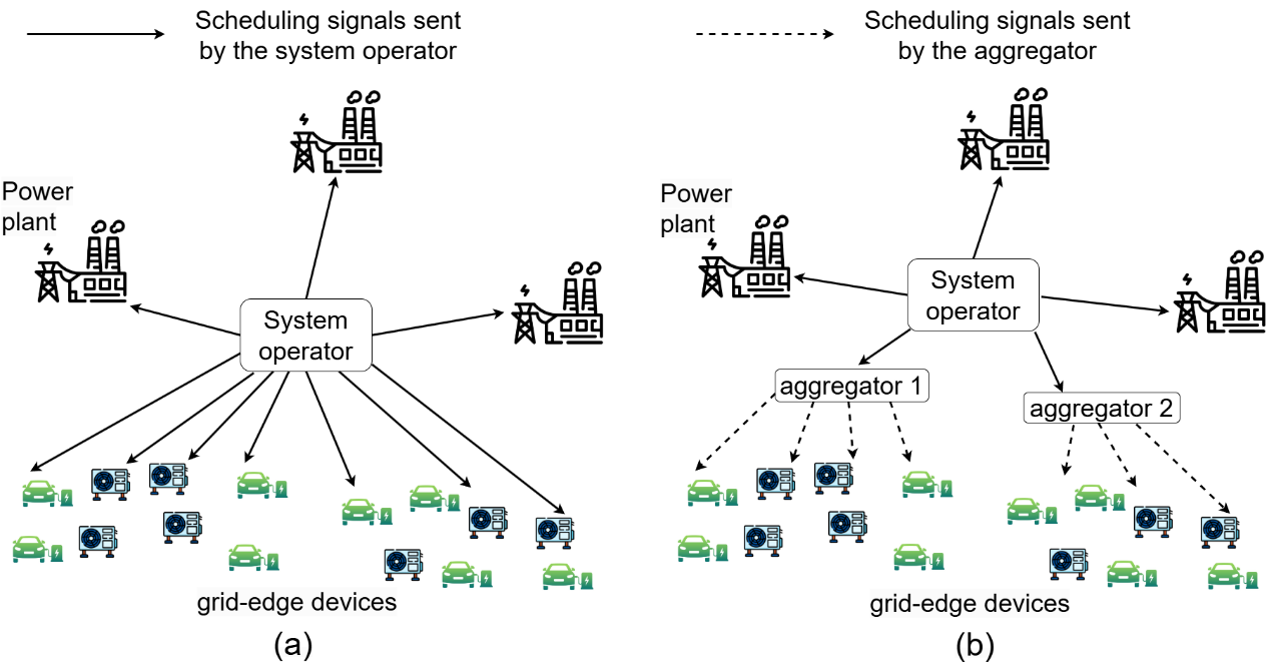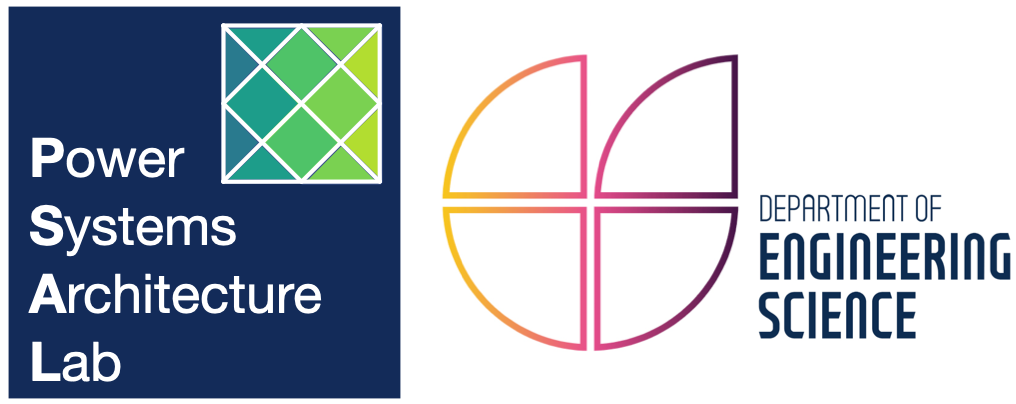Aggregation of grid-edge devices
Aggregation of Grid-edge Devices
The transition to net-zero carbon requires integrating millions of grid-edge devices (electric vehicles, heat pumps, batteries) into the Great Britain power system over the next decade. These devices can provide flexibility equivalent to multiple large power plants, but traditional centralised dispatch is infeasible due to computational and communication challenges.
One promising solution is aggregation. As illustrated in Figure 1, numerous grid-edge devices are grouped and managed by different aggregators. Instead of directly scheduling numerous individual grid-edge devices, the system operator can schedule the aggregated power for each aggregator, while the aggregators are responsible for dispatching their own devices—thereby alleviating computational and communication burdens.
However, several core challenges exist for aggregation. These include the computational complexity of deriving the feasible operational region for the aggregated devices within each aggregator, the integration of complex (non-convex) device operational models and power network constraints, and the uncertainty associated with grid-edge devices, which naturally arises from weather conditions and human behaviours.

Principal Investigator
Doctoral Students

Yihong Zhou
DPhil Student
Recent Publications
-
Yihong Zhou, Chaimaa Essayeh, Thomas Morstyn, "Aggregated Feasible Active Power Region for Distributed Energy Resources with a Distributionally Robust Joint Probabilistic Guarantee," in IEEE Transactions on Power Systems, vol. 40, no. 1, pp. 556-571, Jan. 2025, doi: 10.1109/TPWRS.2024.3392622. https://ieeexplore.ieee.org/document/10506998
-
Yihong Zhou, Chaimaa Essayeh, Thomas Morstyn, “A novel surrogate polytope method for day-ahead virtual power plant scheduling with joint probabilistic constraints,” in Electric Power Systems Research, vol. 234, 2024, 110623, https://doi.org/10.1016/j.epsr.2024.110623

